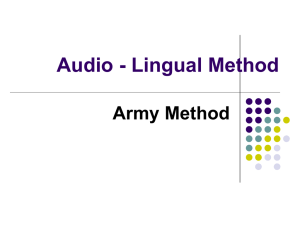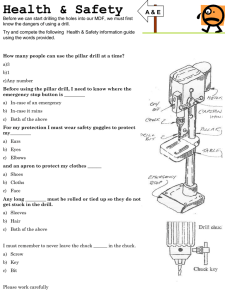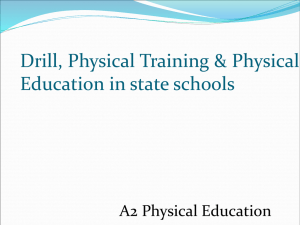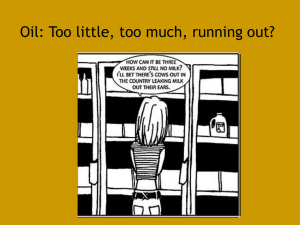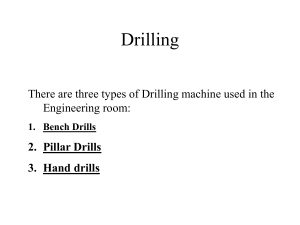The paddy thresher and zero tillage drill
advertisement
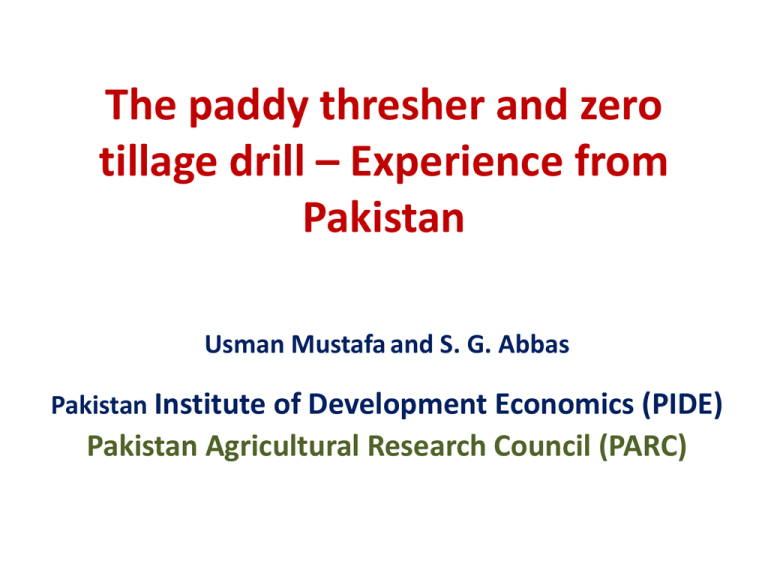
The paddy thresher and zero tillage drill – Experience from Pakistan Usman Mustafa and S. G. Abbas Pakistan Institute of Development Economics (PIDE) Pakistan Agricultural Research Council (PARC) Format Pakistan, agriculture and economy Need of the technology Methodology Zero tillage seed drill import, designing and manufacturing Technical specifications of ZT drill PT import, designing and manufacturing Technical specifications of PT drill The Road to Success ZT Drill and PT Units Manufactured & Area Covered/year (Million ha) Financial Impact of ZT & PT (Million Rs.) Technology Development Process Conclusion and recommendations for the Promotion of Mechanized farming in Pakistan Pakistan, agriculture and economy Principal natural resources are arable land and water. About 25% of total land area under cultivation Agric. accounts for about 21% of GDP and employs about 43% of the labor force. Wheat and rice are the major crops as well as the cropping systems of Pakistan’s agriculture. Need of the technology The Green Revolution - 1965 to 1985. Boost in production did not keep pace with the population growth. Stagnation particularly of rice-wheat productivity and environmental changes required - new resource conserving production techniques Challenge of productivity enhancement - ensure environmental safety and conserve natural resources, time, money, and energy Methodology • The study is a review work • Special meetings with Director, ABEI and other engineers engaged in designing and development of ZT drill and PT. Also with social scientists at NARC/PARC. • Anthers are also engaged with these machines Zero tillage seed drill import, designing and manufacturing Land preparation for wheat in rice-wheat rotation is an energy and cost intensive, time consuming practice – delay in wheat sowing Low yield - the concept of zero-tillage sowing method was considered Early 1980 New Zealand Pakistani origional agri. Engineer brought ZT drill idea and machine First prototype ZT drill was imported from Aitcheson Industries from New Zealand, during mid-1980. Efforts by FMI/AEBI, CIMMYT – local industries” Joint Venture” – 1990-96 Zero Tillage Drill (ZT Drill) Technical specifications of ZT drill Power requirement : 35 kW (45 hp) tractor Field capacity: 1 acre/hour Operating cost: Rs.1, 350/acre Savings: Rs. 3,700/acre Pedy thresher import, designing and manufacturing After harvest, rice threshed with manual beating, bullock/tractor treading and by manual cleaning. With this conventional system, the rice threshing season continues for 3 to 4 months in Sindh and Balochistan provinces Highly laborious, time consuming, deteriorates rice quality and exposed to bad weather conditions. IRRI/PAK farm machinery project during late seventies and early eighty A tractor PTO operated high capacity (throw-in type) rice thresher was imported from Thailand Pedy Thresher (PT) TECHNOLOGY HIGHLIGHT Output Capacity: 1.5 t/h Operating Cost : Rs. 2230/t Savings: Rs. 3960/t Manufacturers : 16 The Road to Success ABEI, Islamabad has designed and developed ZT drill and PR to suit farming conditions ZT manufactured and marketed >35 local manufacturers > 5,500 units available with the farmers. ZT drill used on 0.325 m.ha out of 2.0 m.ha for wheat sowing during the year 2010. Recently the price has been decreased to Rs 25, 000, mainly due to higher production and improvement in design and material from the imported Rs 2.5 million. The Road to Success There are Rs 16811 million saving due to the introduction of his machine in the rice-wheat rotation from 2002 to 2010 . PT is popular in Sindh and Balochistan province under IRRI rice cultivation. The net saving from one machine is Rs. 0.5 million per season. Six manufacturers are manufacturing this machine mainly in Punjab. The overall net saving to national exchequer due to the adoption of ZT drill is Rs 16811 million during 1995-2010. ZT Drill and PT Units Manufactured & Area Covered/year (Million ha) Year 2012 2011 2010 2009 2008 Units Manufactured/year Area Covered/year (Million ha) Zero-tillage Drill Paddy Thresher Zero-tillage Drill Paddy Thresher 1500 2000 0.325 0.286 1800 2200 0.3 0.286 2500 2500 0.3 0.26 3500 2800 0.275 0.208 3400 1700 0.25 0.13 Financial Impact of ZT & PT (M. Rs.) Years Zero-Till Drill Paddy Thresher 1995 6.88 1996 7.55 1997 16.00 1998 93.71 1999 149.94 2000 196.60 2001 240.60 2002 287.01 3.60 2003 315.34 36.00 2004 512.01 180.00 2005 1023.50 576.00 2006 1555.80 912.00 2007 1993.40 1222.3 2008 2297.50 1247.10 2009 3623.20 1964.7 2010 4,492.6 4047.5 Total 16,810.9 10,189.2 Technology Development Process IARS NARS - SSI PARS Farmers M&E (SSI) • Feed Back • Adoption Impact FMI (ABEI) Design/Febri., Testing (lab/field) Demonstration • Farmers • Extension/PA RS/Projects Demonstration (Exp. Station & Farmer Field) NARS/PARS Private Manu. • Agreement • Prototype • Drawing • Fabrication Conclusion and Recommendations Development is a continue process and need close collaboration and cooperation (International, national, local and also among all stake holders). Farm mechanization is an important sub-sector for the national economy. Farm mechanization involves introduction of suitable farm machines and their availability either through import or local manufacturing. AEBI of NARC ,PARC played a pivotal role in development and dissemination of local demanded machines Recommendations for the promotion of farm machines The existing capabilities of public sector Research and Development (R&D) institutions be strengthened A national network for agricultural mechanization needs to be established to coordinate farm machinery R&D activities for efficient utilization of available resources along with new proposals to meet the farmers needs The scope of R&D be extended to farm level processing for value addition to agricultural produce Recommendations for the promotion of farm machines Print and electronic media be used for promotion of farm mechanization technologies. Private sector be in particular encouraged to contribute towards mechanization of agriculture sector and: - initiate in-house R&D activities - improve quality and standard of their products - improve their manufacturing set-ups to meet the local demand at competitive price - establish customer hire services for costly agricultural machinery. Thank you very much


